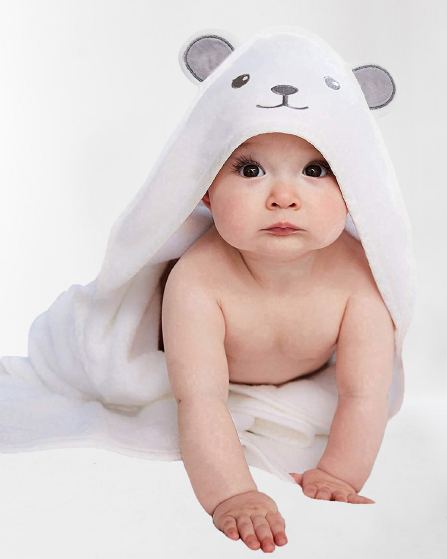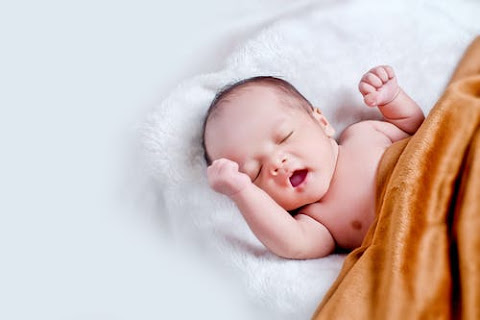BENEFITS OF USING BABY TEETHERS FOR INFANTS - BABY TEETHING TOYS (BPA FREE & SAFE)
The Advantages of Using Baby Teethers for Infants
Your baby will grow 19 teeth between
the ages of 7 and 24 months, but the first tooth is by far the most exciting.
Teething is an exciting time for both the baby and the parents, but it can also
be a frustrating time. Once the process begins, your baby will experience a
variety of symptoms, including fever, sleep disturbances, a decreased appetite,
red sore gums, biting more than usual, and possibly diarrhea. It's natural to
want to help your baby feel less pain when you notice some of these symptoms.
Thankfully, fever medications, teething gel, and baby te have made this
possible.
Because of the pain in their gums,
infants will want to put everything in their mouth during this time, so baby
teethers can be very useful. These infant toys, which come in a variety of
shapes and colors, provide a variety of benefits for a teething baby. Take, for
example,
Pain Relief
According to pediatricians, 10-15% of
babies experience significant pain and discomfort during the teeth-growing
process. To relieve the pain, infants begin to suck everything that comes into
contact with their hands. Teethers are made specifically for this purpose, to
help babies experience less pain and make the teething process go more
smoothly. When a baby chews on a teether, he or she will begin to feel better
and more comfortable. Many parents use these toys to feed their babies when
they are hungry. Newborn teethers provide a temporary solution by allowing you
to prepare your baby's food while keeping your child entertained.
A Variety of Options
You can get a baby teether made of wood,
plastic, or rubber, and they come in a variety of colors, shapes, and sizes.
Some parents opt for teethers that can be chilled to provide a soothing cool
sensation to the baby's gums. This chilling effect has the added benefit of
reducing pain for the baby while chewing the toy. If you choose to use this
type of teether, keep in mind that freezing it too much can harm the baby's
delicate and soft gums. Choose a baby teether that is easy for your child to
put in his or her mouth and that he or she will feel comfortable chewing.
Safe to Use
When it comes to babies, safety should always
come first. When it comes to teething toys for babies, quality should always
take precedence over quantity. Make sure the toy isn't too big or too small as
well. You can get a variety of teethers in any shape you want these days, but
keep in mind that it must be safe for your baby to put in his or her mouth.
BPA, lead, phthalate, heavy metals, cadmium, and other toxic substances should
be avoided at all costs. Instead, choose safer alternatives such as BPA-free orwooden baby teethers.
Cleaning and Sanitizing Teethers and Toys
Make a plan for cleaning and sanitizing
teethers and rattles to prevent germs from spreading, especially if there are
other babies nearby who might want to put the toy in their mouth. If the toy
falls to the floor, have sanitizing wipes on hand. Toys should be washed with
soap and water regularly . Many toys can also be placed on the dishwasher's top
rack.
Teether Buying Advice
Teethers come in a variety of materials.
Rubber, silicone, plastic, and wood are some of the materials used. Teethers come in a variety of shapes, colors, and sizes. To appeal to a child's
interests, many toys have different textures on them. Many teethers are round,
making them easy for a baby to grip and hold before putting it in his or her
mouth.
When a baby is teething, always keep
an eye on them. Look for a teether that your baby can hold and safely place in
their mouth when choosing one. Toothbrushes that are too big or too small can
be dangerous.
Toys that aren't meant to be
teethers, such as toys with small parts that could fall off and cause choking,
should not be used as teethers.
When choosing a teether, it's
critical to ensure that it's safe for the baby to put into his or her mouth.
Only give your child phthalate- and BPA-free teethers. Find out if the teether
is made from non-toxic paint.
Do not purchase teethers that have
been used previously. As companies create new toys designed to go into a baby's
mouth, many toy safety standards have changed over time. These are made of more
environmentally friendly materials that won't expose a baby to harmful
chemicals. With each new baby, consider purchasing new teethers.








Comments
Post a Comment